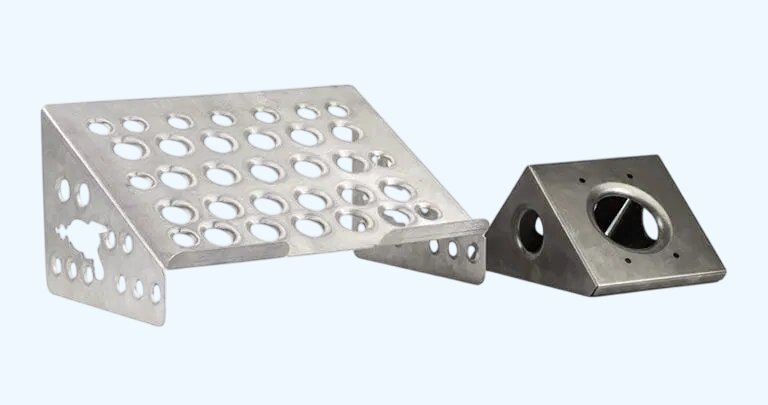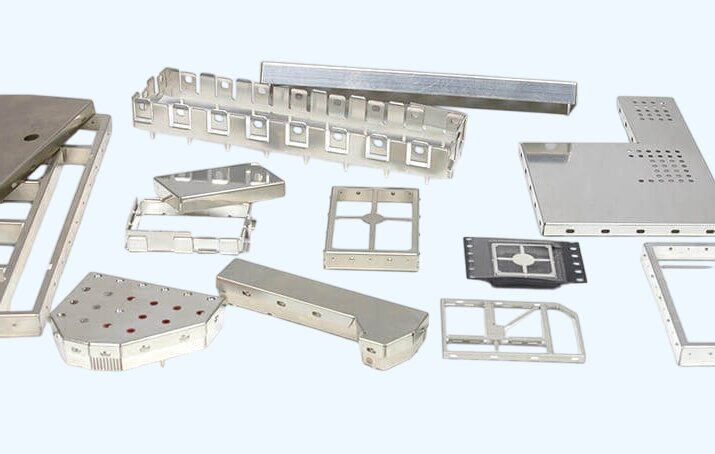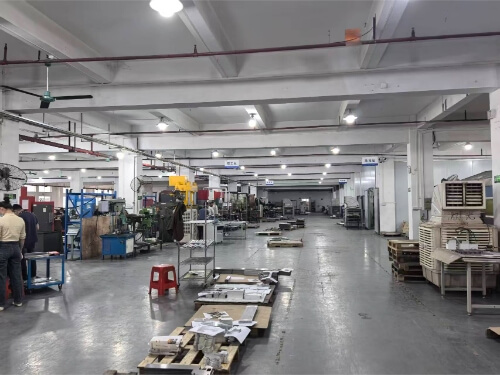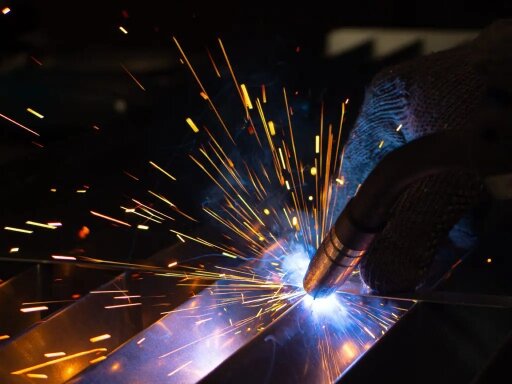많은 제조업체가 가공 부품의 비용 상승과 품질 관리 문제에 직면하고 있습니다. 정밀 가공 부품은 항공우주에서 의료 기기에 이르기까지 다양한 산업 분야에서 엄격한 공차, 일관된 품질, 안정적인 성능을 제공함으로써 이러한 문제를 해결합니다.
정밀 가공 부품은 수 마이크로미터의 공차까지 매우 정밀하게 제작되는 부품입니다. 이러한 부품은 CNC 가공, 선삭, 밀링, 연삭을 통해 정확한 사양을 충족합니다. 자동차 엔진부터 수술 도구에 이르기까지 현대 제조업은 이러한 부품에 의존하고 있습니다.
정밀 가공의 세계는 최첨단 기술과 오랜 시간 검증된 엔지니어링 원칙을 결합합니다. 오늘날의 제조 환경에서 이러한 부품이 왜 가치가 있는지 살펴보겠습니다.
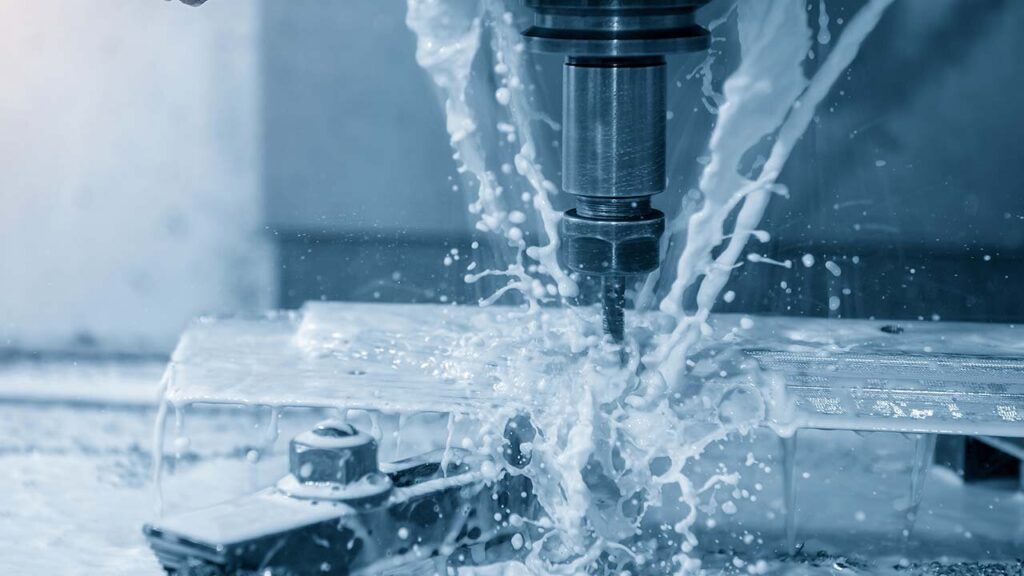
정밀 가공 부품이란 무엇인가요?
정밀 가공 부품은 뛰어난 정확도와 엄격한 공차로 제작되는 부품입니다. 이러한 부품은 고급 가공 기술을 사용하여 제작되므로 각 부품이 의도한 기능에 완벽하게 맞습니다. 이 공정에는 공작물에서 재료를 제거하여 원하는 모양, 크기 및 마감을 만드는 과정이 포함됩니다.
제조업체는 오차를 최소화하면서 부품을 생산하기 위해 정밀한 가공에 의존합니다. 엄격한 공차는 완제품의 무결성을 유지하기 위한 핵심 요소입니다. 정밀 가공 부품의 가치는 전반적인 제조 효율성과 제품 품질을 향상시키는 능력에 있습니다.
정밀 가공 공정의 주요 유형
정밀 가공은 매우 정확한 도구와 기계를 사용하여 정확한 치수와 표면 마감을 가진 부품을 만드는 작업입니다. 이 공정은 엄격한 공차와 복잡한 설계 사양을 충족하는 부품을 제조하는 데 필수적입니다.
CNC 가공
CNC 가공 가장 일반적인 방법입니다. 컴퓨터로 제어되는 기계를 사용하여 재료를 절단, 성형 및 마감합니다. CNC 기계는 CAD 설계의 정확한 지침을 따르기 때문에 높은 정확도와 반복성을 보장합니다. 다목적이며 복잡한 모양과 엄격한 공차를 처리할 수 있습니다.
EDM(방전가공)
일렉트릭 디엠 전기 스파크를 사용하여 티타늄이나 경화 강철과 같은 단단한 재료를 성형할 수 있습니다. 복잡한 디테일을 만들거나 기존 방법으로는 절단하기 어려운 재료로 작업할 때 이상적입니다. 이 프로세스에는 물리적 접촉이 포함되지 않으므로 도구 마모를 방지할 수 있습니다.
연마 및 연마
연마 연마 휠을 사용하여 소량의 재료를 제거하고 매끄러운 마감을 얻을 수 있습니다. 부품을 마감하고 엄격한 허용 오차를 충족하는 데 자주 사용됩니다. 연마는 표면을 더욱 다듬어 부드럽고 윤기 있게 만듭니다.
터닝 및 밀링
선삭은 절삭 공구가 공작물을 회전시키는 동안 공작물을 성형합니다. 일반적으로 샤프트나 볼트와 같은 원통형 부품에 사용됩니다. 반면 밀링은 회전하는 절삭 공구를 사용하여 고정된 공작물에서 재료를 제거합니다. 평평한 표면, 슬롯 또는 복잡한 형상을 만드는 데 이상적입니다.
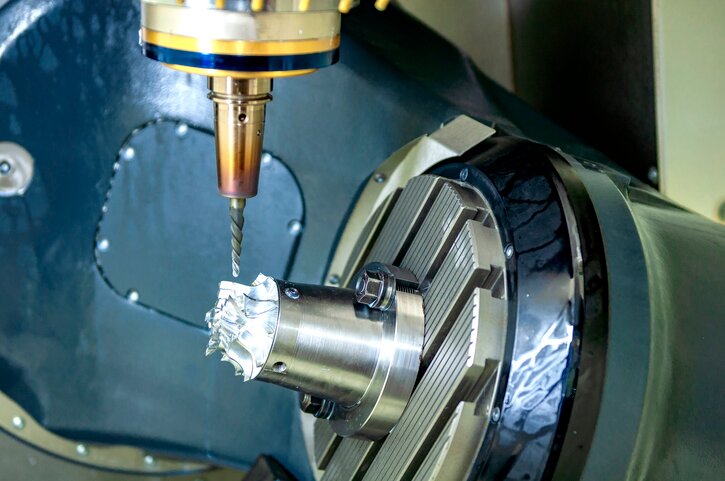
정밀 가공 부품 사용의 이점
정밀 가공 부품은 몇 가지 중요한 제조상의 이점을 제공합니다. 이러한 장점은 업계에서 높은 표준과 신뢰할 수 있는 제품 결과를 달성하는 데 도움이 됩니다.
높은 정확도와 일관성
정밀 가공을 통해 부품을 매우 정확하게 제작할 수 있습니다. 부품 하나를 만들든 대량으로 만들든 각 부품은 정확한 치수에 따라 제작됩니다. 이러한 일관성은 오류와 결함을 줄여 전반적인 품질을 향상시키는 데 도움이 됩니다.
비용 효율적
정밀 가공을 위한 초기 설정은 비용이 많이 들지만 시간이 지남에 따라 비용을 절감할 수 있습니다. 이러한 부품의 정확도가 높으면 실수가 줄어들고 재료 낭비가 줄어들며 재가공해야 하는 부품이 줄어듭니다.
제품 품질 향상
정밀 가공은 최종 제품의 품질을 향상시킵니다. 이렇게 만들어진 부품은 엄격한 공차를 충족하고 표면이 매끄러워 예상대로 작동합니다.
향상된 성능
정밀 가공된 부품은 완제품의 성능을 직접적으로 향상시킵니다. 정확한 측정을 통해 이러한 부품은 완벽하게 맞물려 모든 것이 제대로 작동하도록 보장합니다.
맞춤화
정밀 가공을 통해 특정 요구에 맞는 고도로 맞춤화된 부품을 제작할 수 있습니다. 독특한 모양, 크기, 소재 등 어떤 것이든 정밀 가공을 통해 구현할 수 있습니다.
정밀 가공의 일반적인 금속
정밀 가공에는 다양한 금속이 사용되며, 각 금속은 다양한 응용 분야에 고유한 이점을 제공합니다. 올바른 소재를 선택하면 부품의 성능이 우수하고 특정 산업 표준을 충족할 수 있습니다.
강철 합금
스테인리스강 및 탄소강과 같은 강철 합금은 강도, 내구성 및 다용도로 인해 정밀 가공에 널리 사용됩니다.
알류미늄
알루미늄은 가볍고 부식에 강하며 가공하기 쉬워 많은 산업 분야에서 널리 사용됩니다. 또한 알루미늄은 열 및 전기 전도성이 우수하여 전자제품 및 열교환 시스템에 자주 사용됩니다.
티탄
티타늄은 무게 대비 강도와 부식에 대한 저항성이 뛰어난 것으로 알려져 있습니다. 가공이 까다로울 수 있지만 티타늄의 고유한 특성 덕분에 고성능 애플리케이션에 이상적입니다.
황동과 구리
황동과 구리는 전기 및 열 전도성이 뛰어나 정밀 가공에서 가치가 높습니다. 황동은 부드럽고 가공하기 쉬워 매끄러운 마감 부품에 적합합니다.
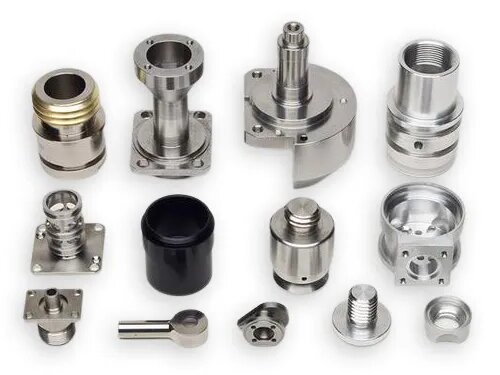
정밀 가공 프로세스
정밀 가공은 원자재를 고품질 부품으로 만들기 위한 세부적인 공정입니다. 이 단계는 최종 제품이 정확한 사양을 충족하도록 설계되었습니다.
자르기 및 모양 만들기
절단과 성형은 정밀 가공의 첫 번째 단계입니다. CNC 기계나 선반과 같은 도구를 사용하여 재료를 거친 형태로 절단합니다. 이렇게 하면 미세 조정을 수행하기 전에 대략적인 크기로 부품의 모양이 만들어집니다.
드릴링 및 보링
드릴링 및 보링 부품에 구멍이나 내부 피처를 생성합니다. 드릴링은 둥근 구멍을 만들고 보링은 기존 구멍의 크기와 매끄러움을 다듬습니다.
표면 마무리
표면 마감은 가공 공정의 마지막 단계입니다. 부품의 표면을 매끄럽게 다듬고 광택을 내어 외관과 내구성을 개선합니다.
가공의 정밀도에 영향을 미치는 요인
가공 공정의 정밀도에 영향을 미치는 요인은 여러 가지가 있으며, 이는 최종 부품의 품질과 정확도에 영향을 미칩니다.
공차 및 치수 정확도
공차는 부품의 크기에서 허용되는 변형입니다. 부품이 정확하게 맞물리도록 하려면 엄격한 공차가 필수적입니다. 치수가 아주 조금이라도 어긋나면 부품이 의도한 대로 작동하지 않을 수 있습니다. 치수 정확도는 부품이 설계 요구 사항을 충족하는지 확인하는 데 핵심입니다.
공작 기계 성능 및 보정
공작 기계의 성능은 정밀도를 위해 매우 중요합니다. 잘 관리되고 보정된 기계는 높은 정확도로 부품을 제작합니다. 기계가 원활하게 작동하려면 정기적인 점검과 유지보수가 필요합니다. 기계가 올바르게 보정되지 않으면 부정확한 부품을 생산할 수 있습니다.
절삭 공구의 역할과 공구 마모
절삭 공구는 정밀한 가공을 위해 매우 중요합니다. 공구의 품질은 재료를 얼마나 깨끗하게 절단하는지에 영향을 미칩니다. 시간이 지나면 공구가 무뎌지거나 마모되어 절단 정확도가 떨어질 수 있습니다.
재료 특성과 가공에 미치는 영향
가공되는 재료는 정밀도에 영향을 미칠 수 있습니다. 재료마다 경도와 특성이 다르기 때문에 절단이나 성형이 얼마나 쉬운지에 영향을 미칩니다. 부드러운 소재는 더 쉽게 가공할 수 있는 반면, 딱딱한 소재는 공구가 더 빨리 마모될 수 있습니다.
정밀 가공 부품의 응용 분야
정밀 가공 부품은 많은 산업 분야에서 사용됩니다. 정밀 가공 부품은 제품이 안정적이고 안전하게 작동하도록 보장합니다. 다양한 분야에서 어떻게 적용되는지 살펴보겠습니다.
항공우주산업
항공우주 산업에서 정밀 가공 부품은 안전과 성능에 필수적입니다. 엔진 부품, 랜딩 기어, 제어 시스템과 같은 부품은 매우 엄격한 공차를 충족해야 하며, 정밀 가공을 통해 이러한 부품이 비행 중 거친 조건을 견딜 수 있도록 보장합니다.
의료기기 및 임플란트
의료 기기와 임플란트가 제대로 작동하려면 정밀 가공이 필요합니다. 수술 도구, 관절 대체물, 치과용 장치와 같은 부품은 정확한 치수로 제작해야 합니다. 그래야 올바르게 맞고 안전하게 작동하며 환자에게 해를 끼치지 않습니다.
자동차 제조
자동차 산업은 엔진 부품, 브레이크, 서스펜션 시스템 등 많은 차량 부품에 정밀 가공 부품을 사용합니다. 정밀 가공은 이러한 부품의 내구성과 올바른 기능을 보장하여 자동차 안전 및 성능에 대한 높은 기준을 충족합니다.
전자 및 반도체 산업
전자 및 반도체 산업에서는 커넥터, 케이스, 방열판 등을 만드는 데 정밀 가공 부품이 사용됩니다. 이러한 부품은 기기가 제대로 작동하려면 엄격한 사양을 충족해야 하며, 정밀 가공은 모든 부품이 제대로 맞고 제대로 작동하도록 하는 데 핵심적인 역할을 합니다.
산업용 기계 및 장비
정밀 가공 부품은 산업 기계에서도 흔히 볼 수 있습니다. 기어, 샤프트, 베어링은 높은 정확도로 제작되어야 합니다. 정밀 가공은 제조 및 에너지와 같은 산업에서 장비가 원활하고 효율적으로 작동하는 데 도움이 됩니다.
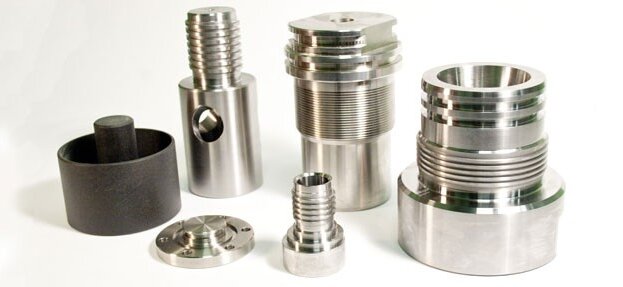
결론
정밀 가공은 높은 정확도와 일관성을 갖춘 부품을 만드는 데 핵심적인 역할을 합니다. 항공우주, 의료 기기, 자동차, 전자, 산업 기계 등 다양한 산업 분야에서 사용됩니다. 이러한 부품은 제품의 안전성과 신뢰성, 우수한 성능을 보장합니다. 가공 공정의 각 단계는 엄격한 표준을 충족하도록 세심하게 설계되었습니다.
문의하기 다음 프로젝트를 위해 정밀 가공 부품이 필요하다면 지금 바로 문의하세요. 귀사의 요구에 맞는 솔루션을 찾을 수 있도록 도와드리겠습니다!
안녕하세요, 저는 케빈 리입니다

지난 10년 동안 저는 다양한 형태의 판금 제작에 몰두해 왔으며 다양한 워크숍에서 얻은 경험에서 얻은 멋진 통찰력을 이곳에서 공유했습니다.
연락하세요

케빈 리
저는 레이저 절단, 굽힘, 용접 및 표면 처리 기술을 전문으로 하는 판금 제조 분야에서 10년 이상의 전문 경험을 갖고 있습니다. Shengen의 기술 이사로서 저는 복잡한 제조 문제를 해결하고 각 프로젝트에서 혁신과 품질을 주도하는 데 최선을 다하고 있습니다.

